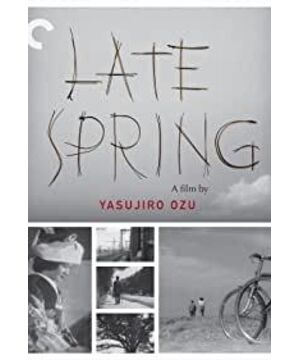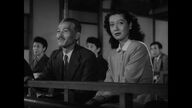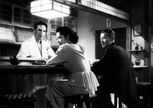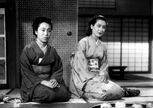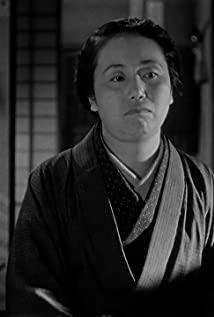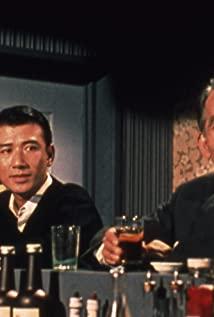Photographer's Viewing Method
Art critic John Berge mentioned in "The Way of Seeing": "The photographer's viewing method reflects his choice of subject matter." The understanding and appreciation of images also depends on each person’s unique viewing method.” (Berger, 1972: 3) The viewing method of the image expresses the attitude of the viewer. All artistic images can be said to be rooted in objective images, but they often show significant differences in the specific connection with objective images. Likewise, if the same subject falls into the hands of different directors, it will also get completely different performances.
What the director is most fond of is the angle of the lens caused by the position of the camera. Yasujiro Ozu mostly uses a low-angle photography method, placing the lens at a low position two to three feet above the ground, avoiding all overlooked shots. It has been said that "a bird's-eye view photography should not be abused to express people" (Sato, 1981: 212). This is because looking up at people has the humility of respecting people. And his ban on the movement of the film camera avoids creating a bias against the character on the camera and adding personal emotions. It can be seen that Ozu uses a humanistic spirit to shape each protagonist.
The shaping of women in late spring
Huang Guozhao mentioned in "Ozu Yasujiro's Movie World" that Ozu has a special liking for family ethics movies. and the five major human relationships as the theme, and appear repeatedly in different films (Huang Guozhao, 2003: 33), and in line with its theme, the static and concise shooting style of Ozu's later works has also been praised by critics.
Rather than asking how Yasujiro Ozu writes about women, he is describing the place of women in stages of life. (Kim Byung-hsung, 1973: 27) Mizoguchi used "The Story of the Rainy Moon" to criticize the man as an ungrateful man, and praised the selflessness and sacrifice of women, while Ozu focused on the situation of his character and the reaction of his character at the stage of life, reflecting how life changes. It cannot be violated, and the character description is also comprehensive, emphasizing the level of reality. In "Late Spring", the director focused the story on the role of Hara Setsuko's daughter, the story was adapted from Hirotsu Kazuo's short story "Father and Daughter" (Ozu Yasujiro Centennial Exhibition, 2003: 139), a university where his wife lost his early years Professor Zhou Ji and his daughter Kiko, Kiko was in health problems due to labor during the war, and in order to take care of her father's daily life, she missed the marriageable age and the right person, and she still hasn't gotten married. The father was secretly anxious, and the aunt was also worried. Kiko told the match, Kiko suspected that her father was going to remarry, Zhou Ji decided to do it, Kiko married her wholeheartedly to fulfill her father, and after traveling in Kyoto, Kiko went out of the cabinet, and in the end, only her father spent time alone.
In "Late Spring", the family still has a very high status for women. The protagonist Noriko is ill, so she takes care of her father's daily life at home, and the people around her are very concerned about her getting married and starting a family. It can be seen that The importance of family to women, such as Simon Povova in The Second Sex. Married Woman" is also like the Chinese saying, "Follow the father at home, and follow the husband when married." The status of women is restricted by the men in the family, but it is interesting that the film also introduces the The novel phenomenon is divorce and female self-reliance. Noriko's friend Aya divorced and became self-reliant. Noriko turned to her when she wanted to not marry, hoping to learn a skill to be able to match her. This is unimaginable in a male-centered society. behaviors, but Ozu used these as themes in the film, and did not depreciate or praise them, so as to show the director's respect for women and every character.
It is also family-centered. It is not as good as the woman in "The Story of the Rainy Moon" who sacrifices for the family. In "Late Spring", Noriko is for her own will, the father she loves, and escapes her father's expectations. It can be seen from the dialogue on the last night that, for Ozu, a woman’s marriage and transition from one family to another is a matter of life’s changes and the evolution of stages, which cannot be resisted, but women’s happiness is still under their own control, such as his father Zhou Ji. It is said that happiness can only be achieved by the joint efforts of husband and wife, which shows the independence of women in the new era. In terms of subject matter, Ozu eschews the ending of the original novel, and only concentrates on describing the relationship and friendship between father and daughter, and finally ends with a lonely father, highlighting the issue that Ozu has always been concerned about—family relationships and the evolution of life.
The dressed Noriko knelt on the tatami and thanked her father for his kindness of raising him. Zhou Ji was well-deserved, but he also squatted down to listen to his daughter and pulled her up. In addition to showing his love as a father, he also showed Ozu's thoughts. , In this relationship, the two are equal, both caring and respecting each other, and there is no trace of patriarchy. The same scene can also be seen in the conversation between the two when they left Kyoto at night. The two were in a cramped lying room, which shows the close relationship between the two. The remarks of the father's lesson were still carried out in a parallel sitting position.
Bibliography
Tadao Sato, 1981 : The World of Kenji Mizoguchi. Beijing: China Film Press.
Jin Bingxing, 1973 : 'Ozu Yasujiro and his works', Ozu Yasujiro Centennial Exhibition, pp.27-28.
Huang Guozhao, 2003 : 'The Cinematic World of Yasujiro Ozu', Centennial Exhibition of Yasujiro Ozu, pp. 29-43.
Simon. Beauvoir, 1949 : The second sex. 3. Taiwan: Zhiwen Publishing House.
Berger, John, 1973: The Ways of Seeing, Guangxi: Guangxi Normal University Press.
View more about Late Spring reviews


